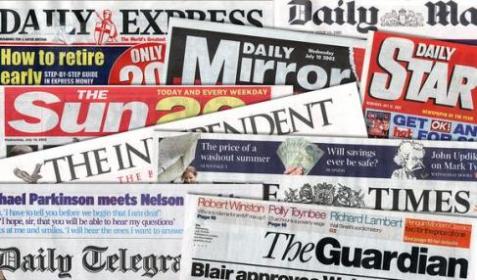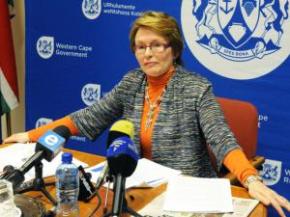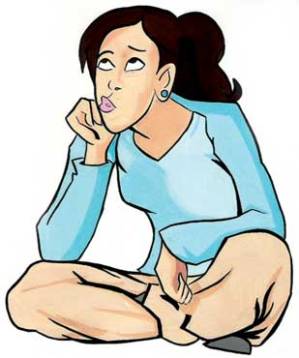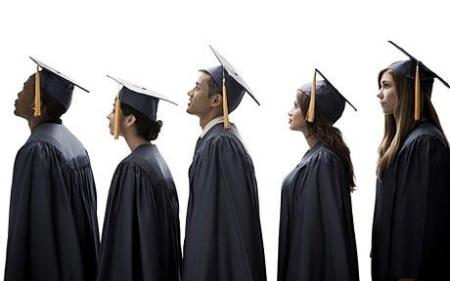image credit: http://www.indexoncensorship.org
The UCT admissions policy debate has been featured largely in South African media since 2005 and has yet to come to its conclusion. Many refute the policy, as they believe that it is no longer fair to have race affect admission. Others support it and view it as a means of overcoming apartheid’s legacy. Herein, controversy arises and, understandably, the media have been tracking the movements made by the university and its vice-chancellor (Max Price) in re-assessing the policy.
It is difficult to decide which news articles provide an honest account of the policy’s updates as only those based on pure fact are liable. However, articles are written by people with their own passions and emotions. They are also commissioned for by newspapers or the conglomerates that own them. Therefore, their content may be questionable or posed to the reader in a questionable way. For the purpose of defining these principles three news articles, all written in February 2013 about UCT’s decision to revisit their admissions policy, will be analysed. These articles are taken from three different newspapers/online sources and these are: the Cape Argus, the Big Issue and the Cape Times.
Journalists and newspapers want their readers to read their stories in a specific way. In other words this is the way that they want the story to be read. To enforce this there are three main techniques called (1) agenda setting, (2) priming and (3) framing. Agenda setting refers to the way in which the media emphasizes certain issues (this includes the placement as well as the frequency of articles) and in turn cause audiences to attach more significance to these specific issues (McCombs & Shaw, 1972). Priming involves the way in which articles may bring to the fore certain “activation tags” that cause the reader to, not only internalize and think about what they are currently reading but also, connect that to items they may have previously seen or read. In a way this is causing the reader to “pull up” specific thoughts or memories they have stored in their minds so that they may read the literature in the way that the writer wants them to. Similarly, framing is the specific way in which the media presents the issue to their audience in order to influence the way they view, or characterize, that issue (Tewksbury & Scheufele, 2007).
In terms of agenda setting, the majority of articles on the UCT policy as well as the articles that were the most up-to-date, factual and informative all came from the Cape Times or the Cape Argus. This is logical as UCT news, it being a university in Cape Town, would be most relevant as well as important to Capetonians. For this reason articles on the policy have been around for a long time and will continue to find their way into Cape Town news. Thus it is necessary to look at the way these articles use framing as a technique to cause an effect in their readers and how an article from outside of the city would differ to one in the Cape Times or Cape Argus.
Article 1, found in the Cape Argus, is called “UCT to revise admission policy”. As in the other articles an obvious activation tag to this article is everything that has come before the individual in relation with the admissions policy. The words “a year of debate” force the reader to acknowledge that the policy has faced a long and on-going battle in the media. This article seems to provide an accurate and fair account of what is happening with the policy through their inclusion of quotes and commentary from Max Price. However, it contains so much of what is being said by Price and the university and seems to skim over the opinions of anybody else. This type of information provides the bare bones of the article yet it misses much of the flesh and bone
The saving grace of article 1 is the reference made to the Commission into Student Admissions as this gives the reader another institute to trust (apart from Price) and widens their range of information. By providing statistics at the end the reader is also given further information as to the race spectrum at the university. These statistics also provide an activation tag to the reader that refers back to the racial issue at UCT. In reading the statistics one can easily see that white students dominate the student body. This refers directly to the problem at hand (issues of race in the university) without ever actually stating so.
The second article, Students split over UCT’s race-based admissions policy, differs largely from the first on a single point: the opinions of those who are affected by the policy. In the first article these are barely glanced over but herein they form the basis of an inconclusive argument (inconclusive as it is yet to be decided whether the policy should stay or go). In doing this the issue is framed in a different way. As a reader, one sees the opinions of others and may internalize or take these opinions as our own because they belong to our peers. After reading the article it is proposed that the reader picks a side yet there is a delicate frame behind this seemingly unbiased, peer-related text that affect one’s decision.
Three of the speakers in the article are in favour of the eradication of the admissions policy. Only one speaker, seen as a representative of a mere ‘several’ others, is against it. Also the statistic provided at the end (the fact that the number of black UCT students has tripled over the years) also favours getting rid of the policy. This article seems to be in favour of this movement and will affect an unassuming reader as such.
The final article, UCT’s senate is the problem, primes the audience immediately through the use of the word “problem” by triggering feelings of suspicion in relation to the UCT senate. Without saying anything the reader may immediately question the validity of the senate though they may have never had similar feelings before. Xolele Mangcu immediately goes on to discredit the main informant from article 1, Max Price, as well as the Commission into Student Admissions and thus discredits the majority of South African media’s coverage of this story. However, in reading the article it seems that Mangcu is not writing specifically for an audience or in order to turn a reader away from their beliefs. He seems to rather use the article as a platform to state his observations on the issue, though passionately so, and his findings are rather intriguing. Specifically those with insight into which institutes/bodies/boards are involved in making decisions for the university.
Though informative this article should not be easily internalized as a closer look reveals that by discrediting and racially tagging (words such as “white professors”) the decision makers in this situation, Mangcu seeks to turn readers against them. It seems that he wishes for them to see these people as enemies so that they might back his argument against them. He goes as far as using sarcasm (his comment on what works in America and what works in South Africa) to prove how irreversibly unjust this system is. Furthermore, he primes readers by including a personal story of experience that they may identify with or that may arouse certain emotions within and cause them to become his allies (have the same viewpoint as him). Overall, this article provides sufficient reason and convincing as to why one should support the admissions policy fully. In doing so, however, it presents the reader with a large amount of bias and an unfair and unbalanced account of the issue.
In analyses of these articles it is clear that the way an issue is presented to an audience greatly effects how they view it. A journalist or newspaper has the power to affect the feelings and thought process of people through the way in which they tackle or present an issue to their readers. As an audience people need to be extremely aware of this so that they are not easily manipulated or convinced to belief what is not true.



